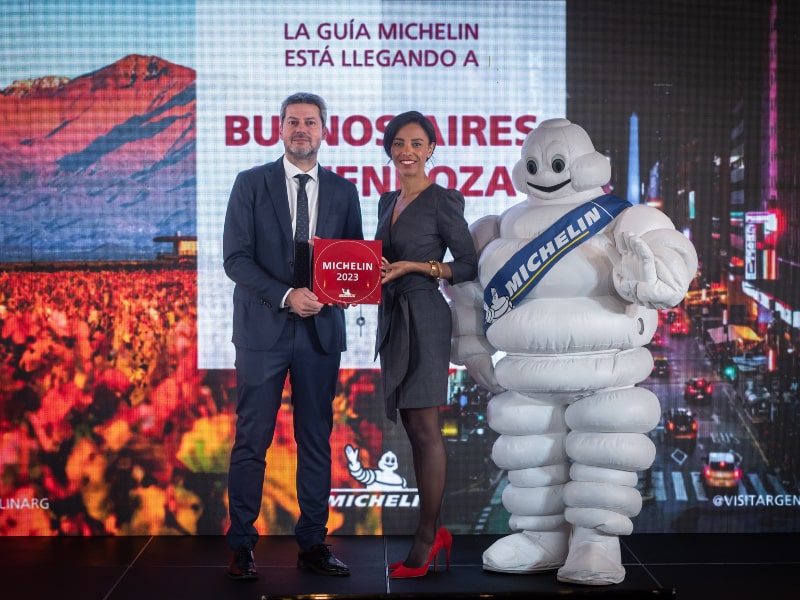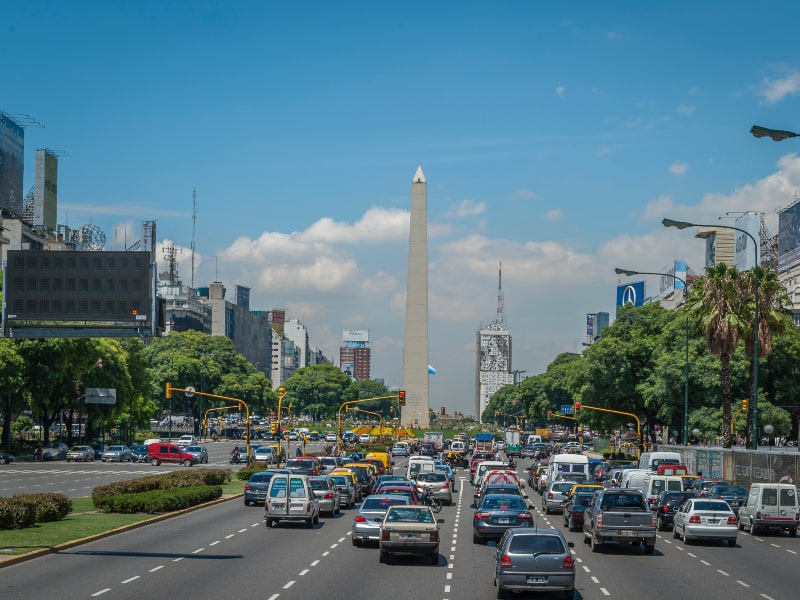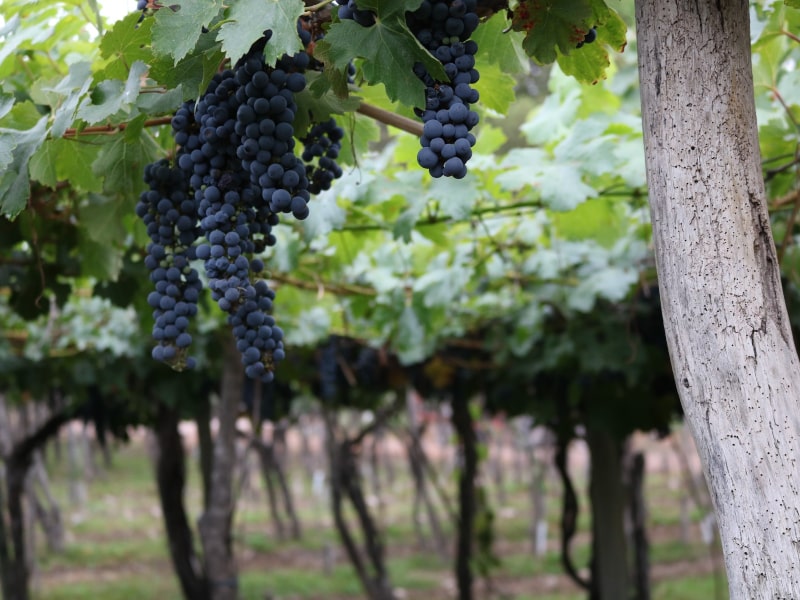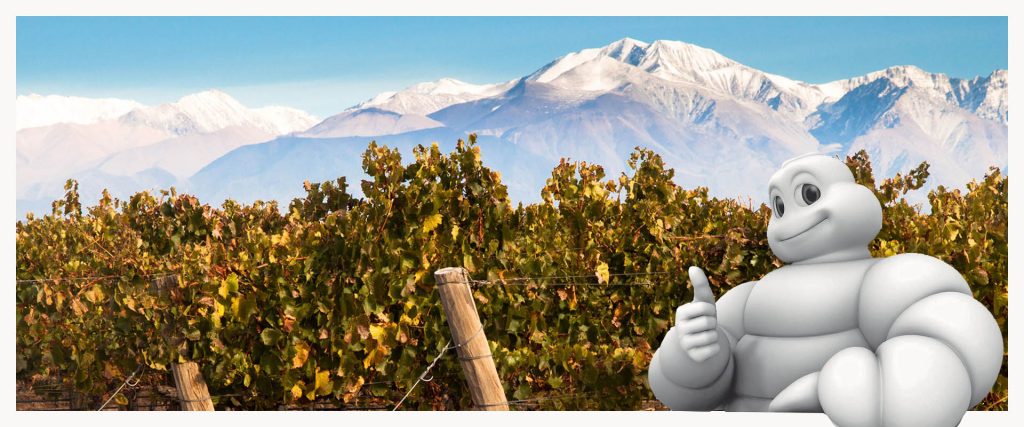In the worlds of gastronomy and wine, the announcement of the presence of the MICHELIN Guide in Argentina, specifically Buenos Aires and Mendoza – the first two locations revealed by the team – is big news.
Argentina is the second country in South America to open its doors to the prestigious guide after Brazil. It’s tacit recognition of the quality of the Argentine restaurant scene, which continues to grow and demonstrate its talents here and overseas. The Michelin Guide is a globally respected means of making one’s name on the international scene and also an enormous selling point for tourists looking for top quality cuisine.
According to the Minister for Sport and Tourism, Matías Lammens, expert consultants have shown that tourists on average spend an extra night in destinations where there are restaurants with MICHELIN stars.
THE MICHELIN GUIDE IN ARGENTINA

The launch event of the Guide MICHELIN in Argentina, held at the Four Seasons Hotel Buenos Aires, featured Minister Lammens, Elisabeth Boucher-Anselin, the Director of Global Communications for the MICHELIN Guide, and Eliana Banchik, CEO of MICHELIN Argentina, who revealed a few details about how the mysterious team currently touring the restaurants of Buenos Aires and Mendoza work: under conditions of strict anonymity, paying for their meal before writing a report that is later evaluated collectively by the Guide’s team.
The organizers explain that there are five universal values that determine which restaurants will feature in the Michelin Guide in Argentina: Quality of the product and ingredients, Mastery of culinary techniques, Harmony of flavors, the personality of the chef in the kitchen and consistency across the menu and the year, meaning that the quality of the dishes served must be maintained all year round.

The first restaurants chosen will be announced on November 24. “Argentina boasts some enormous talents that might not be well-known outside the country. So we want to tell the world: ‘Look what’s happening in Argentina, what these chefs are doing, you need to go there,’” says Boucher-Anselin.
THE VOICES OF EXPERIENCE

Sebastián Weigandt is the chef at Azafrán, one of Mendoza’s top restaurants. He also advises a range of wineries and is well-placed to cast his eye over the local food and wine scenes. He believes that the presence of the MICHELIN Guide in Argentina “is the best thing that can happen to Argentine gastronomy. It’s something I’ve been campaigning for for quite a while: decentralization. Here in Mendoza, the food scene has grown significantly and the Guide’s presence is reward for that: it will tell you where you can eat well, where the service is great and where everything works perfectly. It’ll be a watershed moment for Argentine cuisine.”
The chef believes that oenotourism is a fundamental part of that growth. “I think that the worlds of wine and gastronomy are pretty much one and the same, it’s all linked because plenty of restaurants use wine in their cooking with fabulous results. Which is why MICHELIN have come looking for us.”
Patricia Courtois, a chef who won the first edition of the Prix Baron B Cuisine, who acts as a gastronomic advisor to winery restaurants and currently runs the Colomé restaurant as well as 5 Suelos at Durigutti Family Winemakers, was enthused by the news: “It was a very pleasant surprise, given the benefits for the country as a whole. I think that MICHELIN approve of the growing range on offer in the oeno-gastronomy scene in Mendoza.”
Flavia Amad, the chef at the Osadía de Crear restaurant at Susana Balbo Wines says, “Over the past five or ten years we’ve seen a significant gastronomic revolution in Mendoza, with enormous growth. You can see the change, how the type of gastronomy has evolved, the expertise employed in the use of produce and the techniques to bring out the best of them.
I’m extremely proud of what is happening in the province. As part of the winery, I know that the wines are the star turn. The dishes I make are generally designed to elevate the wines that will be paired with them. Mendoza is a world class wine capital with a lot of wineries and projects that are producing amazing wines.”
Pablo del Río, the Chef at Luigi Bosca, is inspired by the Guide’s arrival: “These kinds of prestigious international guides drive you to improve. I think the good thing is that restaurants will raise their game, which is great but they’ll be looking to do more than just produce great food.”
He’s unequivocal about wine’s role in all this: “Wine put Mendoza on the map. Tourists from overseas started coming to visit because of the wine and so Mendoza became an international destination. The Mendozan food industry has wine to thank for its growth.”
Regarding the effect of the guide’s arrival on wine lists, Río offers a cautious prediction: “I don’t think it’ll change the wines chosen by restaurants or available at the wineries but it will change the concept; the reasoning behind the wines, which wines need to go with which dish or menu. The story they tell. I think that the next step is to reaffirm and redefine the concept of Mendoza in gastronomic terms.”



